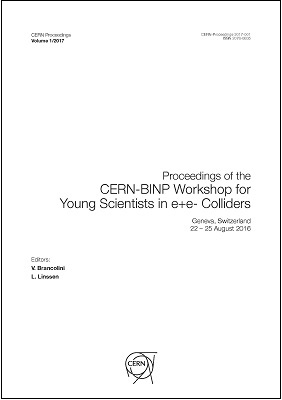FCC-ee Pre-Booster Accelerators
DOI:
https://doi.org/10.23727/CERN-Proceedings-2017-001.13Keywords:
Future circular collider, damping ring, linac, filling scheme, injection time schedule, positron injector.Abstract
CERN’s ambitious new project, Future Circular Collider-ee, will have four operations as Z, W, H, and tt factories covering energies from 45.6 to 175 GeV. The main challenge of Z-operation is to achieve currents as high as 1450 mA; this will depend heavily on the injector. For this reason, we conclude that we need a high bunch charge of 3.3 × 1010, for both e− and e+, and fill 91 500 of each of those bunches into the collider. To achieve the goal, we have designed an S-band (2.856 GHz) normal conducting electron linac up to 6 GeV, which we will use to create and accelerate both electrons and positrons. Positrons will be created inside the linac at 4.46 GeV, will be accelerated up to 1.54 GeV at the linac, and will then be transferred to the designed damping ring. In this paper, we present the designed linac, damping ring, and the operational requirements of the 100 km booster.
Downloads
Published
Issue
Section
License
Authors who publish with this journal agree to the following terms:- Authors retain copyright and grant the journal right of first publication with the work simultaneously licensed under a Creative Commons Attribution License CC-BY-4.0 (link to external page) that allows others to share the work with an acknowledgement of the work's authorship and initial publication in this journal.
- Authors are able to enter into separate, additional contractual arrangements for the non-exclusive distribution of the journal's published version of the work (e.g., post it to an institutional repository or publish it in a book), with an acknowledgement of its initial publication in this journal.
- Authors are permitted and encouraged to post their work online (e.g., in institutional repositories or on their website) prior to and during the submission process, as it can lead to productive exchanges, as well as earlier and greater citation of published work (See The Effect of Open Access).

